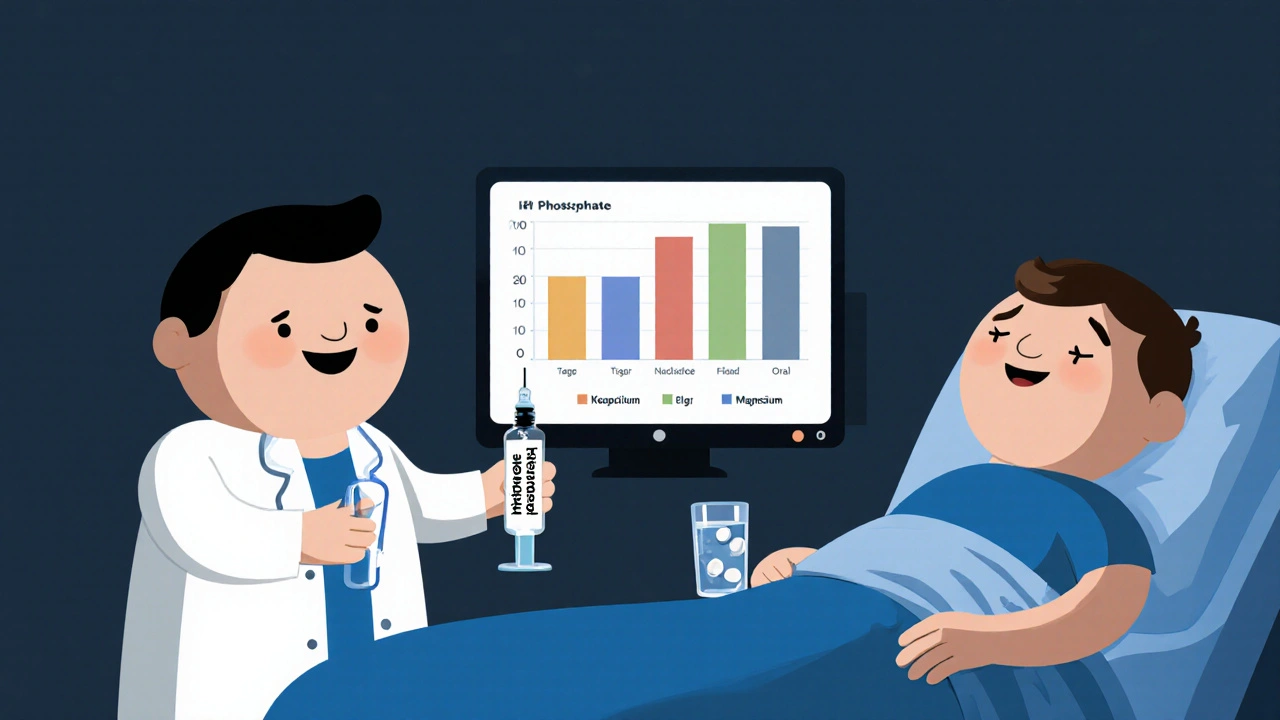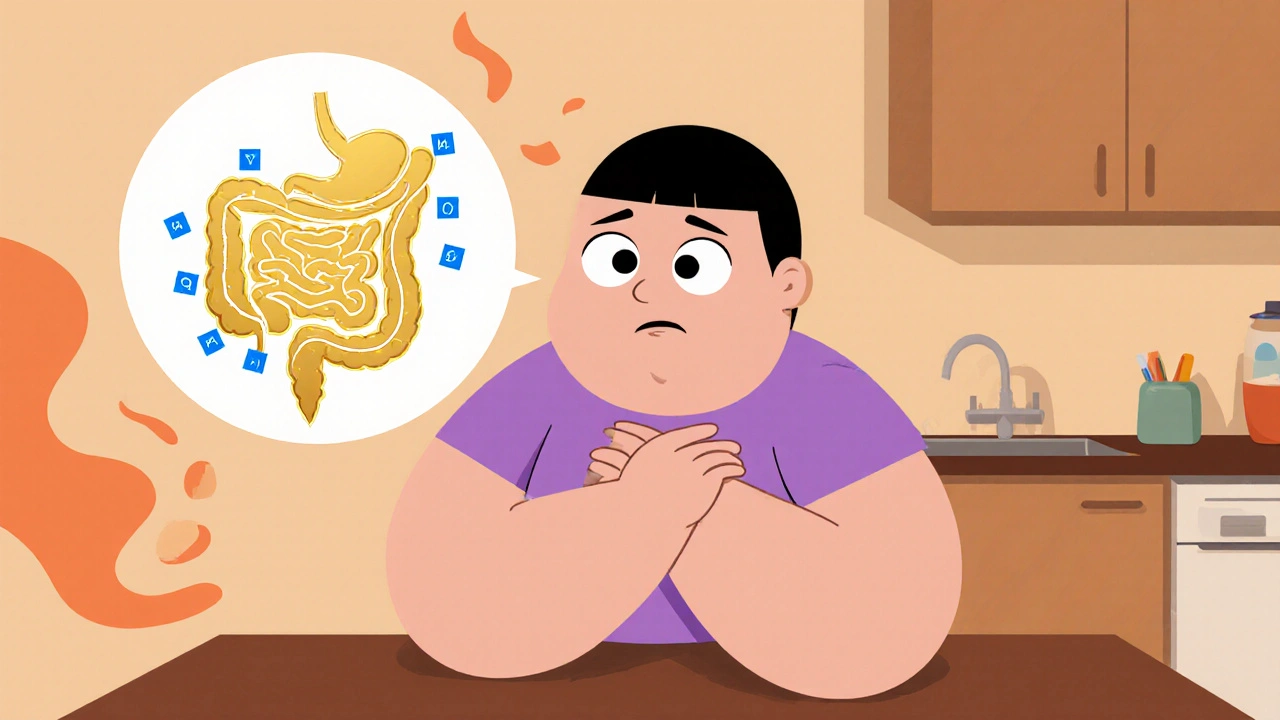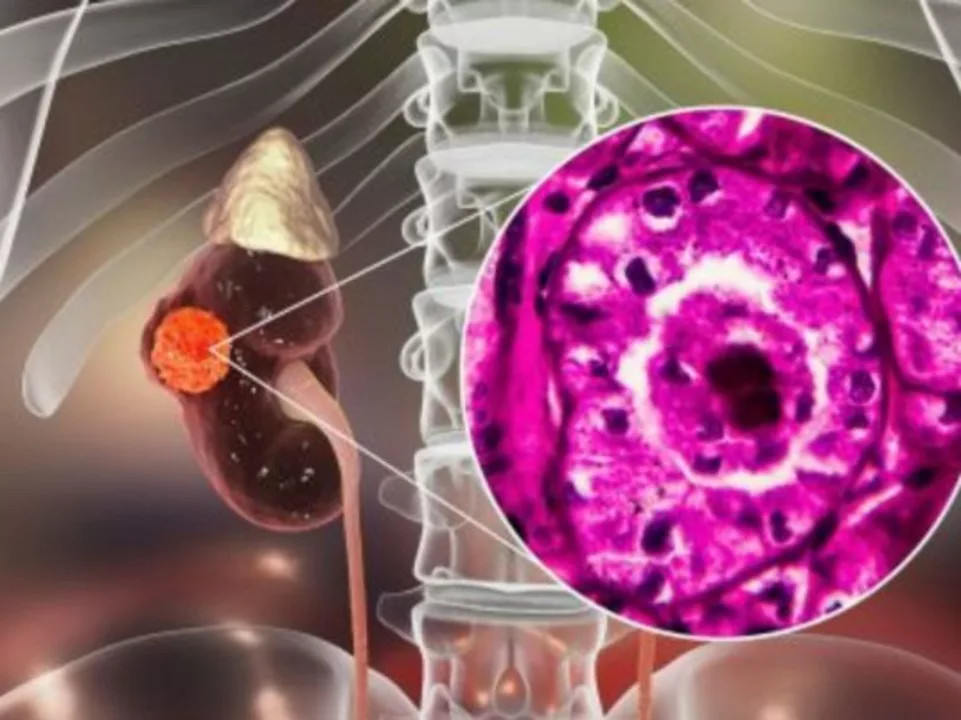Hypophosphatemia Symptom Estimator
This tool helps clinicians assess the severity of hypophosphatemia and associated gastrointestinal symptoms based on laboratory values and clinical factors. Enter key values to receive guidance on potential causes and management steps.
Phosphate Level Assessment
Phosphate Level:
Severity Category:
GI Symptom Score:
Key Indicators:
Recommended Actions
Ever wondered why a low phosphate level can make your stomach feel like a roller‑coaster? Hypophosphatemia is a condition where blood phosphate drops below the normal range, usually under 2.5mg/dL. When that happens, the gastrointestinal (GI) tract often throws a tantrum - nausea, vomiting, diarrhea, or even abdominal pain can show up without warning.
What exactly is hypophosphatemia?
Phosphate is a mineral that helps build bones, make ATP (the cell’s energy currency), and keep cell membranes stable. The body keeps a tight lid on phosphate because it’s involved in almost every metabolic process. When levels dip, muscles get weak, red blood cells become fragile, and the gut suddenly feels off.
- Common causes: refeeding syndrome, chronic kidney disease, alcohol abuse, certain diuretics, and severe burns.
- Risk groups: ICU patients, people on parenteral nutrition, those with malabsorption, and pregnant women.
Why do GI symptoms appear?
The gut is especially sensitive to energy shortage. Low phosphate means less ATP, which hampers smooth muscle contraction and the secretory activity of the gastrointestinal lining. A few mechanisms jump out:
- Impaired smooth‑muscle function - the stomach and intestines can’t push food along, leading to nausea or delayed gastric emptying.
- Altered electrolyte balance - phosphate works hand‑in‑hand with potassium and magnesium; when it’s low, those ions can also dip, sparking diarrhea.
- Acid‑base disturbances - hypophosphatemia often co‑exists with metabolic alkalosis, which can irritate the stomach lining.
In practice, you’ll hear patients describe a “butterfly” feeling in the stomach, sudden bouts of cramping, or an urge to vomit after a meal.
Spotting the problem - diagnostic clues
When you suspect low phosphate, the first step is a serum phosphate test. Normal adult values hover between 2.5 and 4.5mg/dL. Keep an eye on these accompanying labs:
- Calcium often stays normal, but severe cases can drop
- Potassium low potassium can amplify GI upset
- Magnesium low magnesium worsens muscle cramps
- Arterial blood gas - check for alkalosis.
Don’t forget to ask about recent surgeries, nutrition changes, or heavy alcohol intake - those history bits often point straight to the cause.

Treatment - fixing the phosphate and calming the gut
Therapy hinges on two goals: raise serum phosphate to a safe level and stop the GI irritation. Here’s a practical roadmap:
- Identify and remove the trigger: stop offending diuretics, correct refeeding protocols, or manage alcohol withdrawal.
- Oral phosphate salts - preferred for mild cases (1‑2g elemental phosphate per day). Instructions: dissolve tablets in water, take with meals to reduce nausea.
- Intravenous phosphate - reserved for severe drops (<1.0mg/dL) or when the gut can’t absorb anything. Typical dosing: 0.08mmol/kg over 6hours, monitor calcium to avoid precipitation.
- Supportive GI care:
- Antiemetics (e.g., ondansetron) for vomiting.
- Probiotics or bland diet (BRAT) if diarrhea persists.
- Fluid & electrolyte replacement to prevent dehydration.
- Re‑evaluate labs every 12‑24hours until phosphate stabilises above 2.5mg/dL.
Special scenarios you might run into
Not every patient fits the textbook picture. Below are a few edge cases:
- Refeeding syndrome - when malnourished patients get aggressive nutrition, insulin drives phosphate into cells, crashing serum levels. The solution: start nutrition at 5‑10kcal/kg/day, give prophylactic phosphate.
- Pregnancy - fetal bone development relies on maternal phosphate. Pregnant women with persistent hypophosphatemia need close monitoring and may need oral supplementation under obstetric guidance.
- Chronic kidney disease (CKD) - phosphate often runs high, but dialysis patients can swing low after certain regimens. Adjust dialysis calcium concentration and consider phosphate binders.
Prevention and long‑term monitoring
Once you’ve tackled the acute episode, keep the gut happy by staying ahead of future dips:
- Regular blood panels every 3 months for high‑risk groups.
- Balanced diet rich in dairy, nuts, meat, and legumes - aim for 1g phosphorus per day for adults.
- Avoid excessive alcohol and be cautious with high‑dose diuretics.
- When on total parenteral nutrition (TPN), ensure the formula includes 30mmol phosphate per liter.

Quick checklist for clinicians
| Step | Action | Key Indicator |
|---|---|---|
| 1 | Order serum phosphate, potassium, magnesium | Phosphate < 2.5mg/dL |
| 2 | Review recent nutrition changes or meds | Diuretic, TPN, refeeding |
| 3 | Start oral phosphate if mild | Improved GI tolerance |
| 4 | Give IV phosphate for severe | Serum >2.5mg/dL in 24h |
| 5 | Add anti‑emetic and fluid support | Reduced vomiting, stable vitals |
| 6 | Re‑check labs & adjust | Stable electrolytes for 48h |
Bottom line
Low phosphate isn’t just a bone problem - it can turn your gut into a stormy sea. Knowing the signs, ordering the right labs, and treating quickly can turn a nasty GI flare into a smooth recovery. Keep the checklist handy, and your patients will thank you with fewer trips to the bathroom and less nausea.
Frequently Asked Questions
What blood level defines hypophosphatemia?
Adults are considered hypophosphatemic when serum phosphate drops below 2.5mg/dL (0.81mmol/L). Severe cases are often <1.0mg/dL.
Can low phosphate cause diarrhea?
Yes. Phosphate loss often accompanies potassium and magnesium depletion, which together disrupt intestinal water absorption and trigger watery stools.
How fast can IV phosphate raise levels?
A standard IV dose (0.08mmol/kg over 6hours) typically raises serum phosphate by 0.5‑1.0mg/dL within the first 12hours, but labs should be re‑checked every 6‑12hours.
Is oral phosphate safe for everyone?
Mostly, but patients with severe chronic kidney disease or those on calcium‑based binders need medical supervision because phosphate can precipitate with calcium and cause kidney stones.
What foods are rich in phosphate?
Dairy products, meat, fish, poultry, nuts, legumes, and whole‑grain breads. A cup of milk or a serving of salmon provides roughly 250‑300mg of phosphorus.




genevieve gaudet
Phosphate is more than a serum number; it’s the silent architect of cellular energy that ancient healers would have revered as the "life‑force" flowing through every organism. When the tide of phosphate recedes, the gut’s smooth muscles lose their rhythm, and the stomach protests with nausea or a sudden cramp. It definatly shows up in the gut as a restless feeling that can’t be ignored. Think of it as a cultural echo-just as societies crumble without a shared belief, our bodies falter without the mineral that binds ATP to action. The cascade of low potassium and magnesium that follows is like a mis‑tuned orchestra, each instrument out of sync.
Remember, the body’s balance is a delicate dance, and a drop below 2.5 mg/dL can tip the floor.
October 17, 2025 AT 14:44
Joanna Mensch
Behind the clinical charts lies a subtle push by big pharma to keep phosphate deficiencies under‑reported, ensuring a market for overpriced supplements that promise "quick fixes." The real danger is the hidden agenda to divert attention from how modern diet‑patterns, engineered by corporate interests, drain essential minerals from our meals. This silent depletion manifests as erratic GI upset that most doctors chalk up to "random" causes, while the true culprits remain buried in proprietary food formulas.
October 30, 2025 AT 20:56
RJ Samuel
While the "big pharma" narrative is convenient, the actual science points to re‑feeding syndrome and renal handling as the primary drivers of low phosphate, not some clandestine supplement conspiracy. The gut’s irritation is more honestly a biochemical response to ATP shortage than a scripted plot. In plain terms, if you starve your cells of phosphate, you starve the muscles that churn your meals, leading to nausea and cramping-no hidden puppet strings required.
November 13, 2025 AT 04:08
Sara Werb
It’s outrageous – our own healthcare system ignores the very fact that Americans are being starved of essential phosphate while pushing sugary, processed foods that sabotage our metabolism! The very same institutions that champion “fast‑food freedom” are complicit in the surge of GI distress we see in ICU wards!! This isn’t just a medical blip; it’s a teh national crisis that demands immediate policy overhaul!! The evidence is crystal clear, yet the silence persists – a disgrace to our patriotic duty to protect citizen health!!
November 26, 2025 AT 11:20
Steve Holmes
When handling hypophosphatemia, it’s useful to start with a clear protocol: check serum phosphate, adjust for renal function, and consider concurrent potassium and magnesium levels. If the patient is symptomatic with vomiting, oral phosphate salts can be administered with meals to improve tolerance. For severe drops (<1.0 mg/dL), intravenous phosphate infusion under cardiac monitoring is recommended. It’s also worth noting that re‑feeding protocols should be calibrated to avoid sudden phosphate shifts – a detail often overlooked by busy teams. Could the inclusion of anti‑emetics improve oral uptake? Certainly, a multidisciplinary approach involving pharmacy, nutrition, and nursing yields the best outcomes.
December 9, 2025 AT 18:32